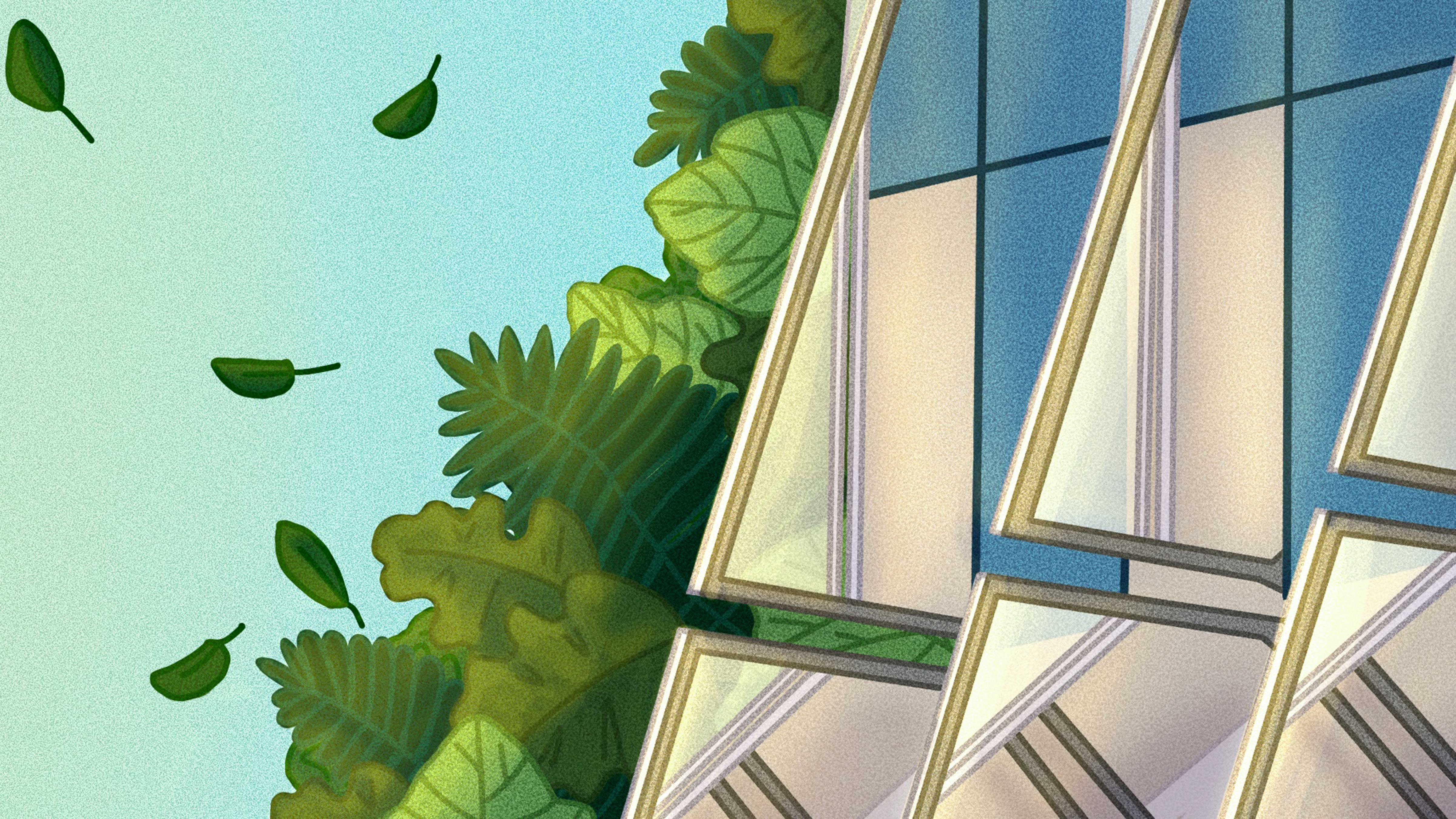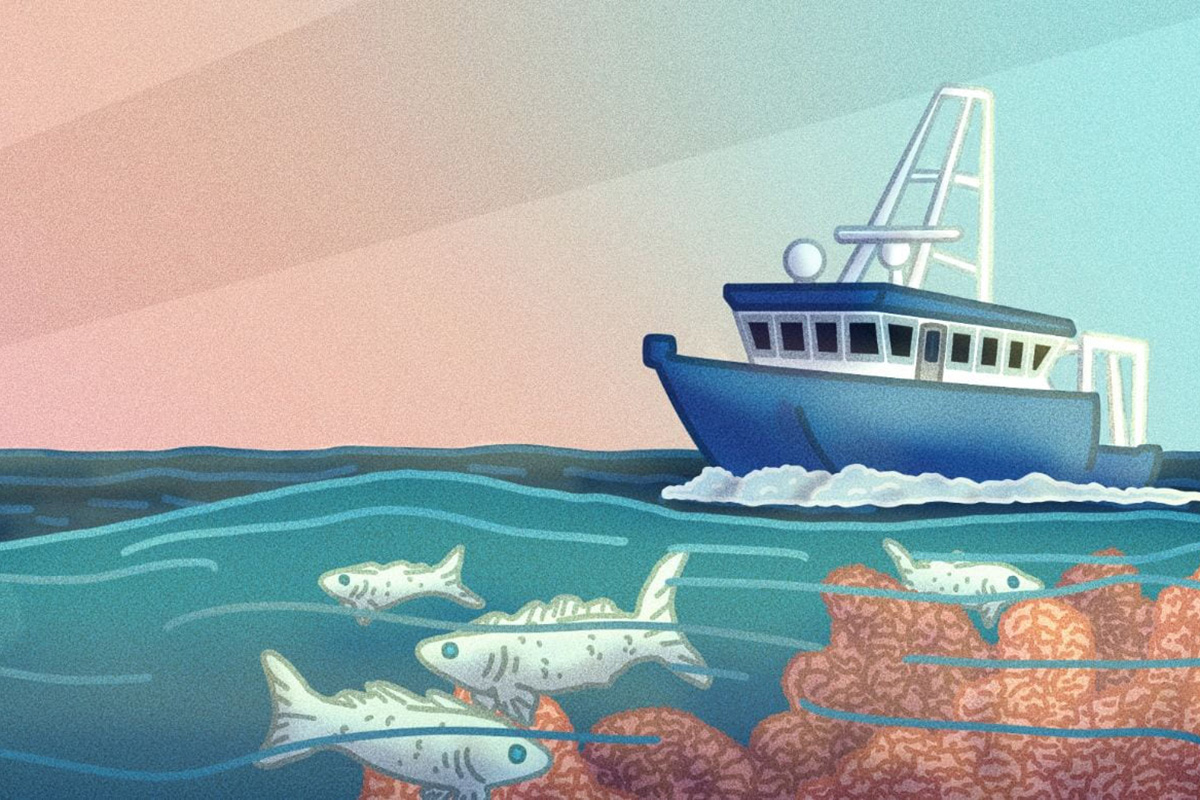Four Ways Penn Arts & Sciences Is Driving Climate Solutions
Mark Trodden, Associate Dean for the Natural Sciences and Fay R. and Eugene L. Langberg Professor of Physics, explains the School’s multi-pronged approach to what he calls the “massive, generational issue” of our time.
“It isn’t news to anyone that climate change is real and affecting our lives more and more. You can see that in everything from natural disasters to economic trends—not just in the United States but around the world,” says Mark Trodden, Associate Dean for the Natural Sciences and Fay R. and Eugene L. Langberg Professor of Physics. “There’s a critical role to be played by institutions like Penn and in particular, by schools like Arts & Sciences.”
At the highest levels, the School has been working to address both the root causes of and fallouts from a changing climate, with “Energy, Sustainability, and Environment” a core aspect of Our Foundations and Frontiers, the strategic plan implemented in 2015. Today, these efforts—on display in their entirety on a new website, https://climate.sas.upenn.edu/—align squarely with the University’s In Principle and Practice strategic framework, specifically in the pursuit to “lead on great challenges of our time.”

In a conversation with Omnia, Trodden explains the School’s multi-pronged approach to what he calls the “massive, generational issue” of today.
1. When it comes to climate change, Penn Arts & Sciences is thinking in broad strokes…
Fields like energy science or chemistry naturally build on decades of climate-related research to find answers to the trials we face today. The path to potential solutions in other fields may not seem as obvious, yet they play an equally critical role in the all-hands-on-deck effort required to pump the brakes on the planet warming further, according to Trodden.
That’s where he says Penn Arts & Sciences has a great advantage. “We have a unique collection of individuals passionately devoted not just to the science of understanding the processes of climate change, what’s driving it, and what the future of the planet looks like, but also to how we might ameliorate that via technological efforts in energy, sustainability, resilience of crops, and more. We’re also thinking about how we tell the story of climate so that we’re all better equipped to make decisions.”
It’s not just conducting the fundamental science but applying it as well, Trodden adds, a process borne out through collaborations with partners at the Perelman School of Medicine, Penn Engineering, Wharton, Penn Nursing, and elsewhere. “It’s natural for the School of Arts & Sciences to serve as a hub that not only works broadly on all aspects of climate change but connects expertise across campus, too,” Trodden says. “It makes it a University-wide effort.”
2. …And getting specific on solutions around energy and crop resilience.
Later this fall, the Vagelos Laboratory for Energy Science and Technology will come online, the new home for the Vagelos Institute for Energy Science and Technology established in 2016. “The institute and the lab are set up to allow people to explore many different directions in the energy space. They will bring together researchers focused on questions of how you not only look for and optimize alternative energy sources, but how you get the most out of the energy sources we have right now,” Trodden says.
It’s natural for the School of Arts & Sciences to serve as a hub that not only works broadly on all aspects of climate change but connects expertise across campus, too. It makes it a University-wide effort.
This continues the work that Vagelos Institute researchers have already been doing—focused on energy storage, optimal use of natural gas, a sustainable food-energy-water system, and a range of other priorities—that has resulted in more than 120 publications to date.
“That’s one part of our approach to addressing this challenge. The other part of the equation is food and plants,” Trodden says. Their natural evolutionary timescale doesn’t allow them to keep pace with a world that’s getting hotter and drier, he adds. “You cannot expect for new crops that are resilient and hardy against the sort of problems created by climate change to emerge organically. This is a rural problem, an urban problem, a problem for all of us—and one that Plant ARC is set up to tackle.”
The Plant Adaptability and Resilience Center (Plant ARC), a just-launched initiative led by Doris Wagner, DiMaura Professor of Biology, will study how plants have historically adapted to a changing climate and what will be required for them to do so today. The ultimate aim is to develop more resilient, sustainable plants, which has implications for agriculture, greenhouse gas emissions, and beyond.

3. The work is happening on a human timescale.
It’s no secret that the effects of climate change are already being felt today, and though it’s not possible to say for sure how quickly the efforts of those at Penn Arts & Sciences will pay off, “nobody is under the illusion that this is not a pressing problem,” Trodden says. “The goal is to understand climate change, think about how to ameliorate its worst aspects, think about how to adapt and improve our existing technologies to do that, and to do it all soon, before the world becomes irredeemably hot.” Many of the ideas currently being worked on at the School, he adds, will have lasting impact far beyond the immediate need.
4. Communicating about all of this is as important as doing the science.
With the appointment of climate scientist Michael Mann, Presidential Distinguished Professor of Earth and Environmental Science, and the creation of his Penn Center for Science, Sustainability, and the Media, the School re-upped its commitment to getting the word out about the effect humans are having on the planet, Trodden says. “Mike is in the School of Arts & Sciences for a reason; it provides him the right breadth and reach to connect him with people who work on policy, communication, the science, and solutions. That center, and the communication outreach it fosters, are crucial to our comprehensive approach to climate.”


